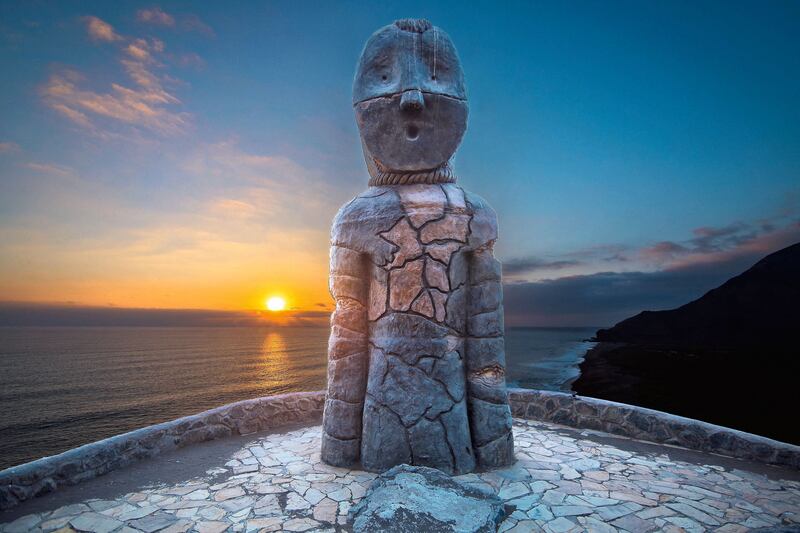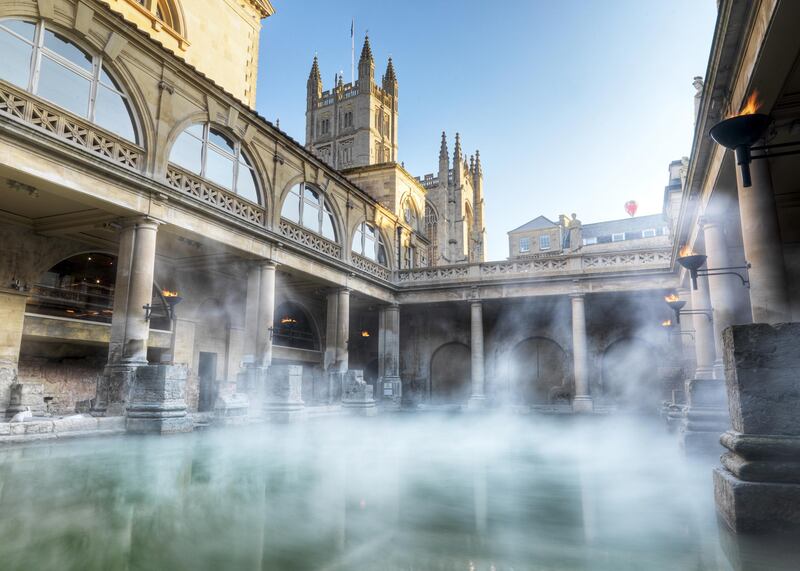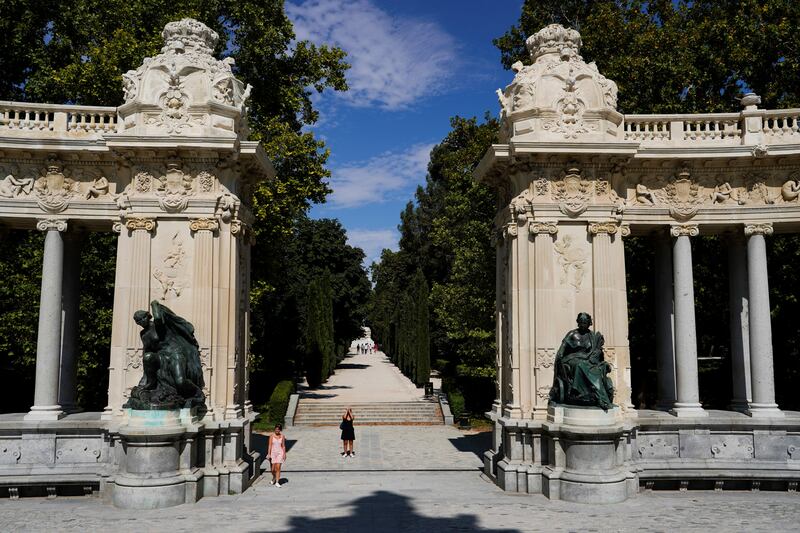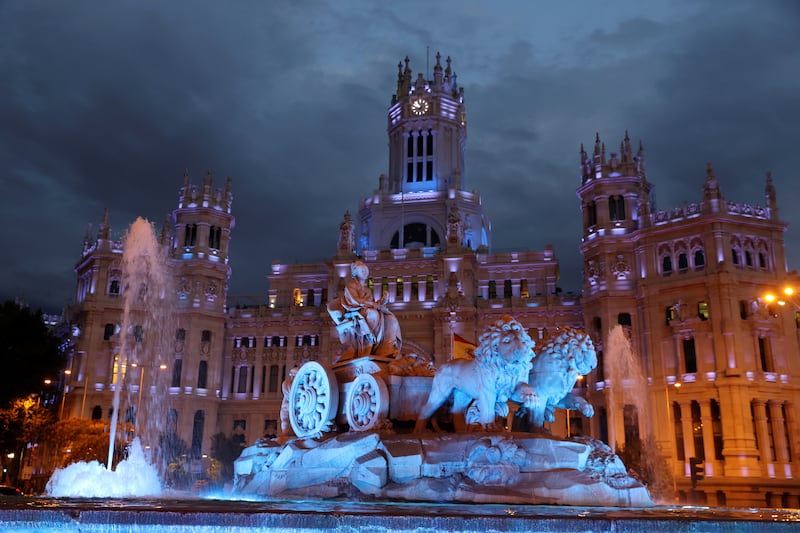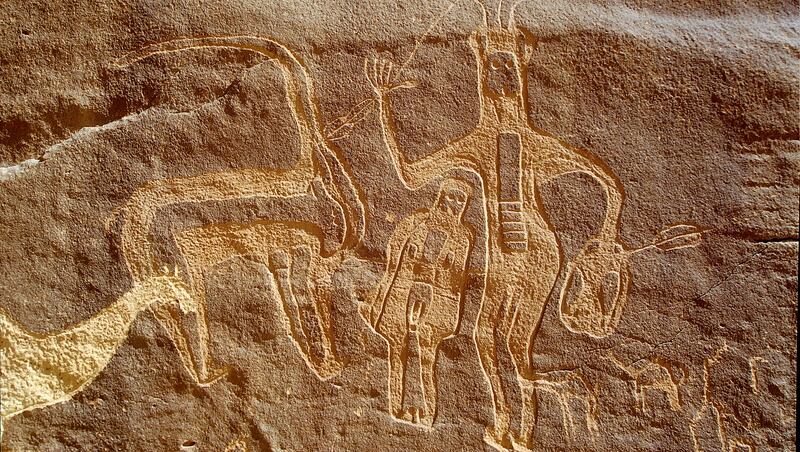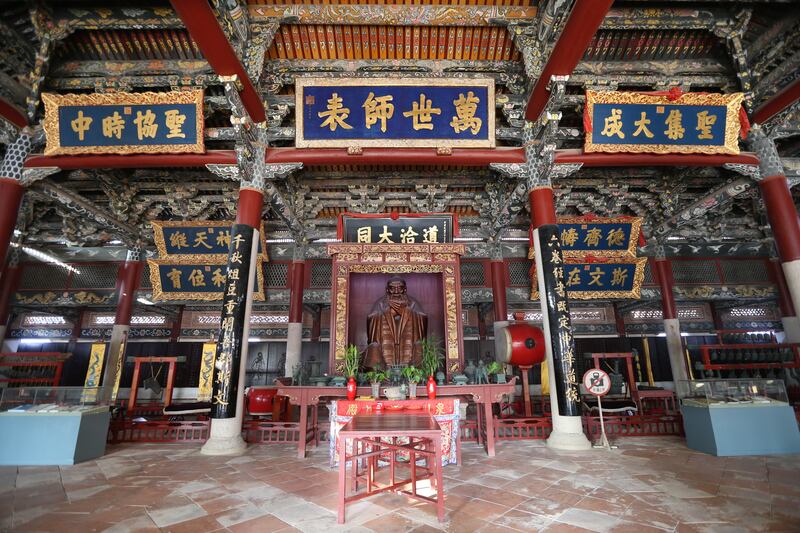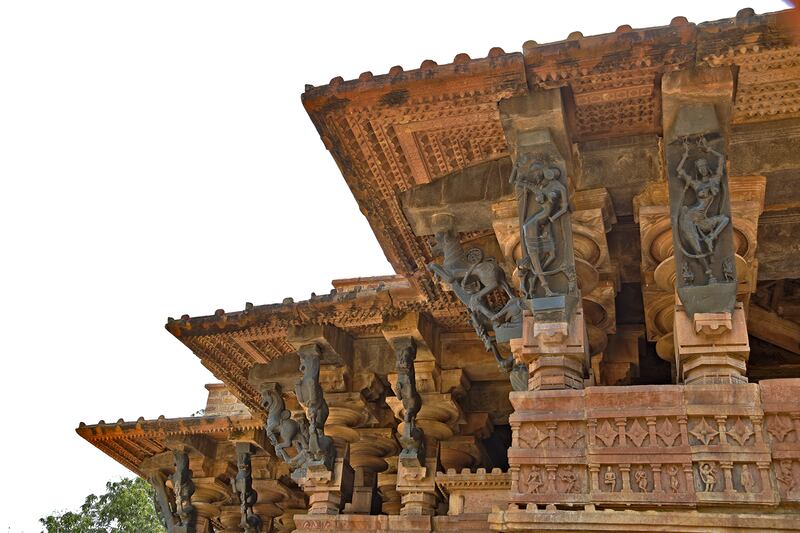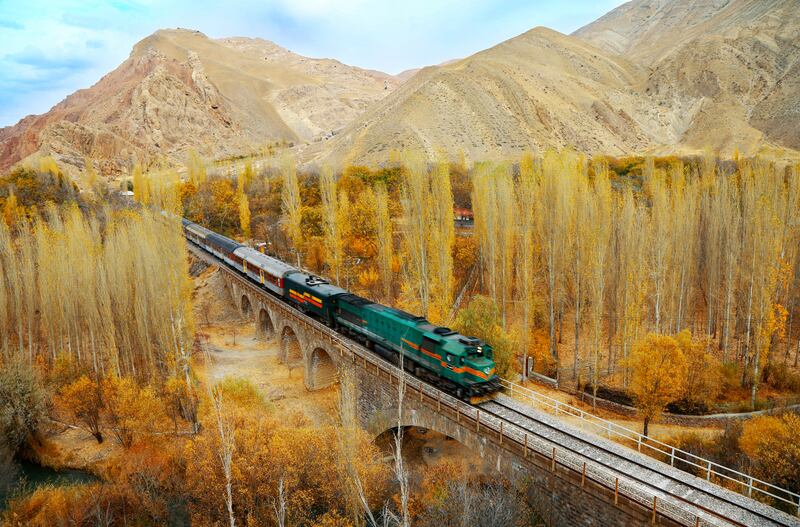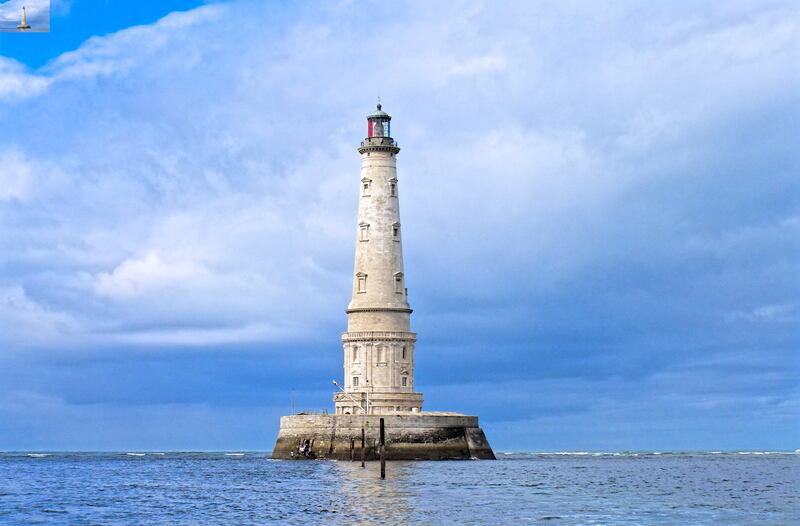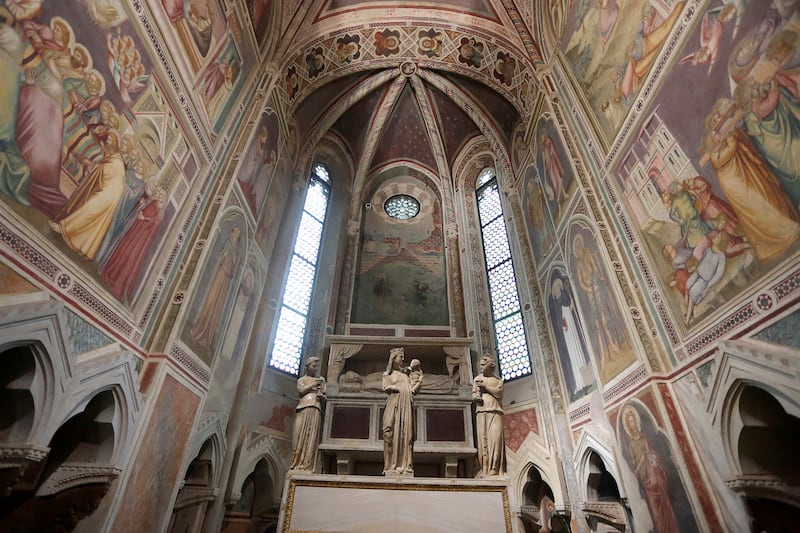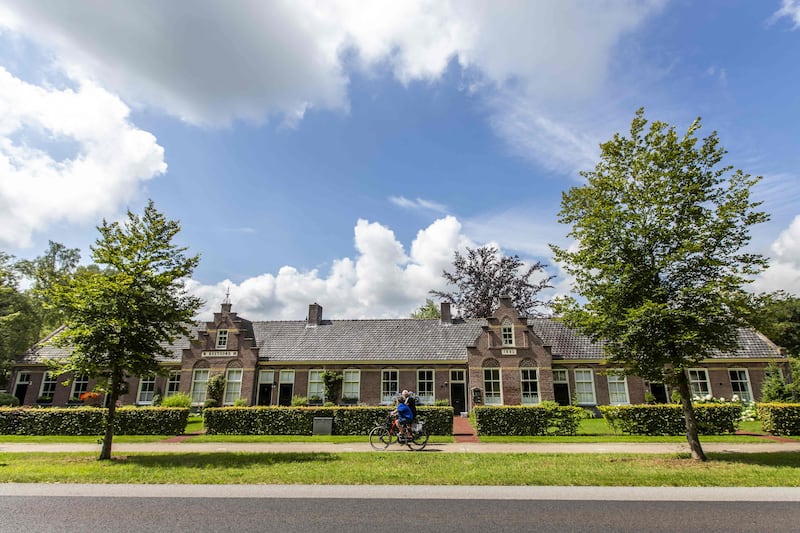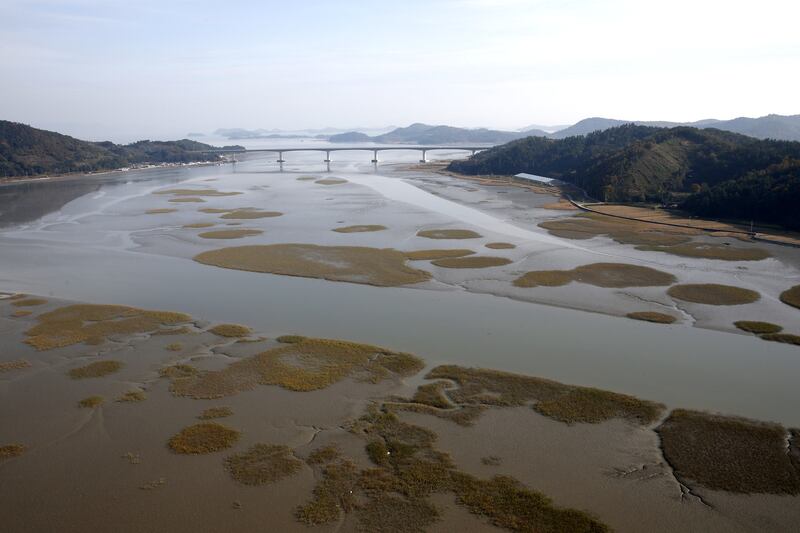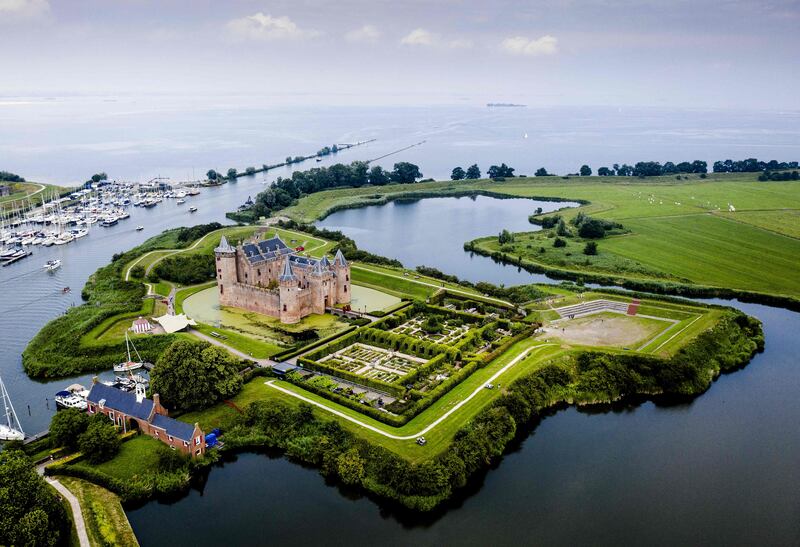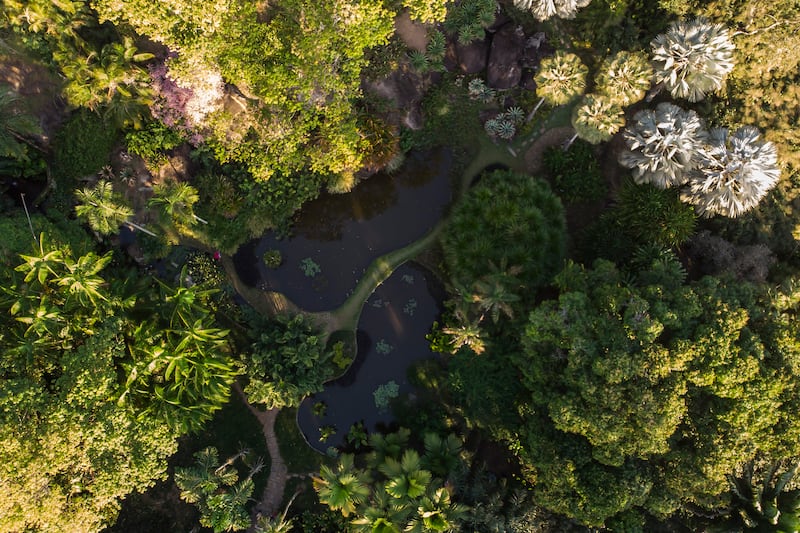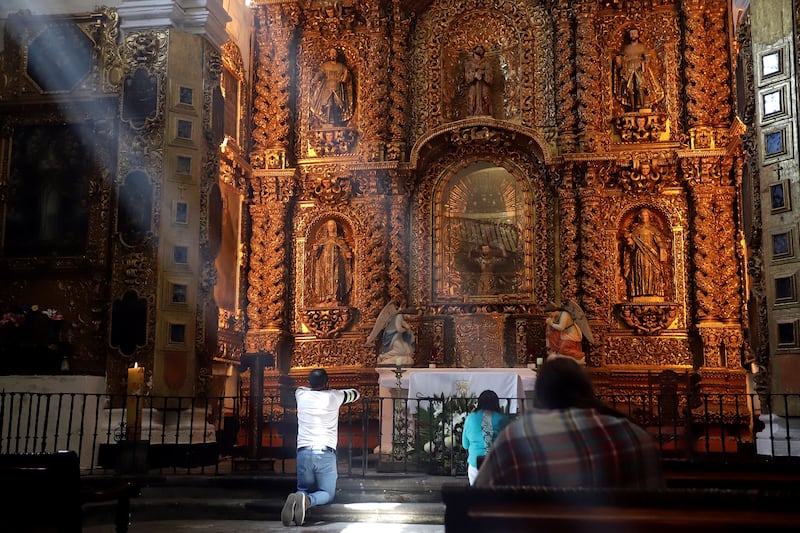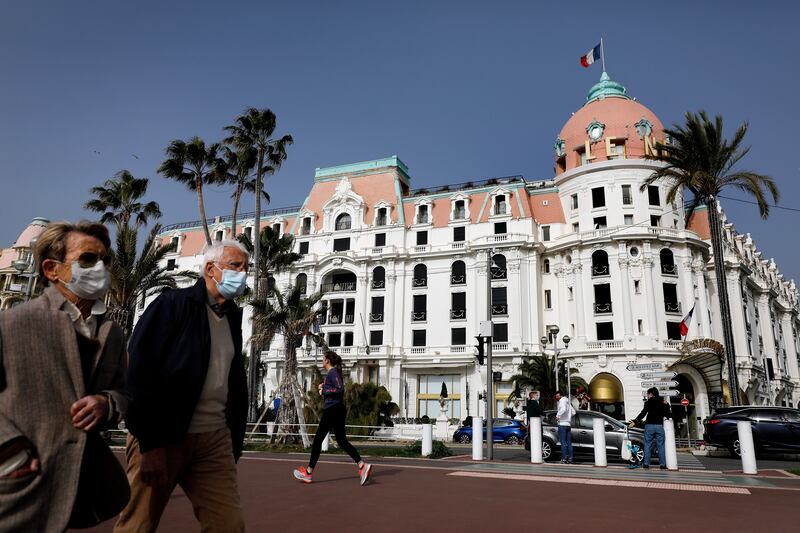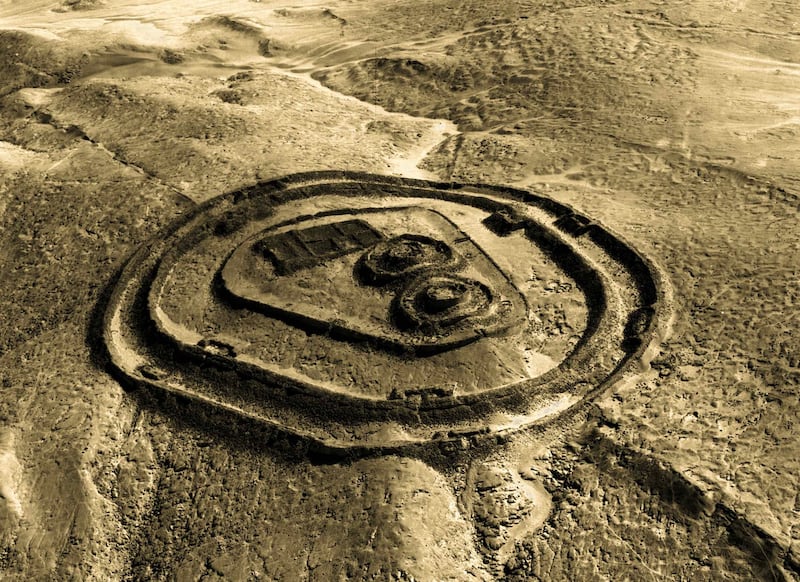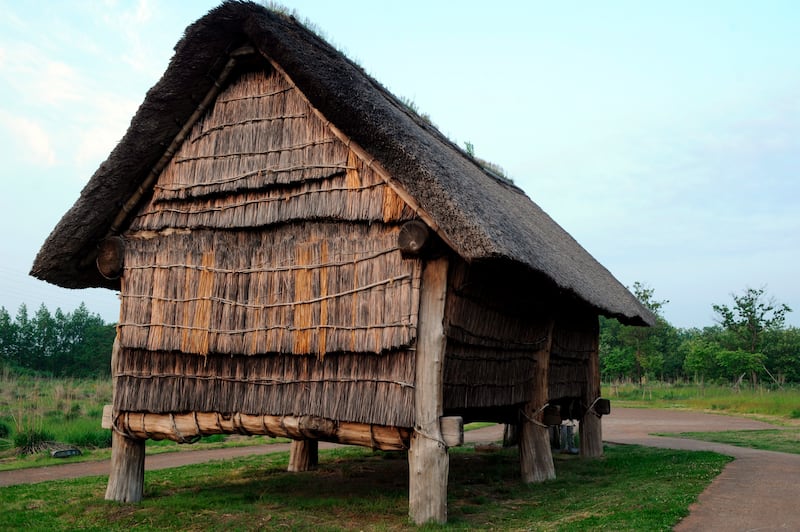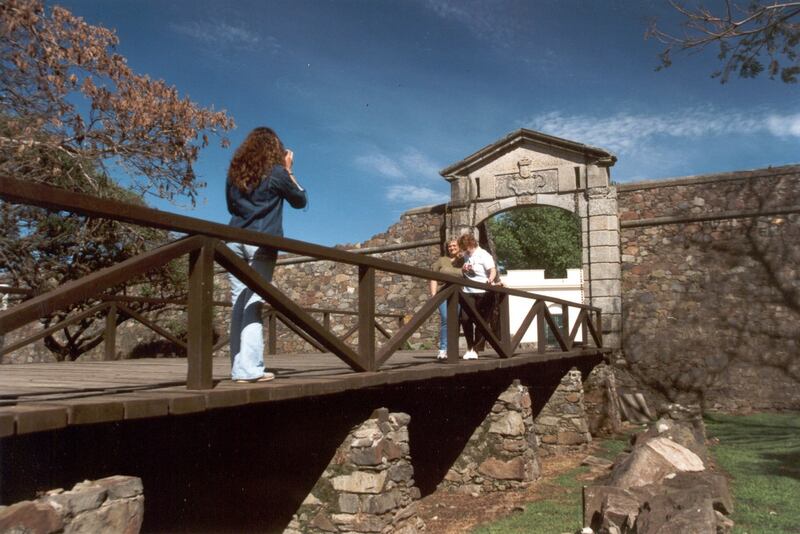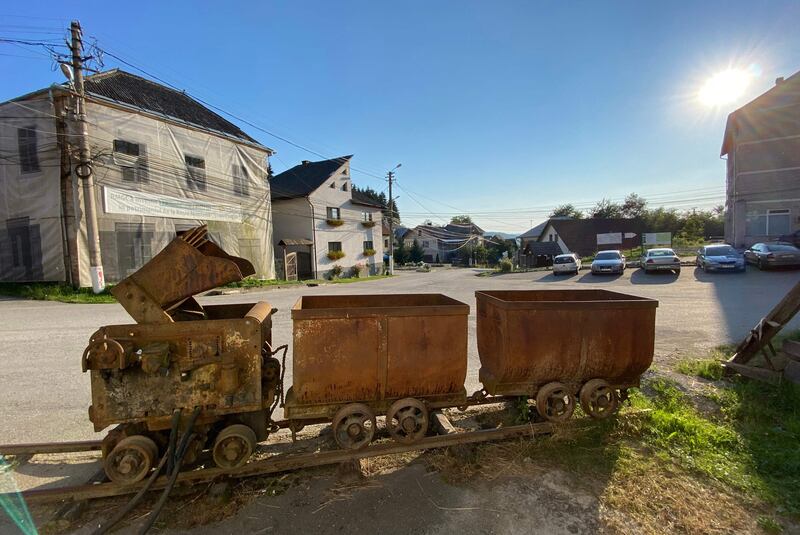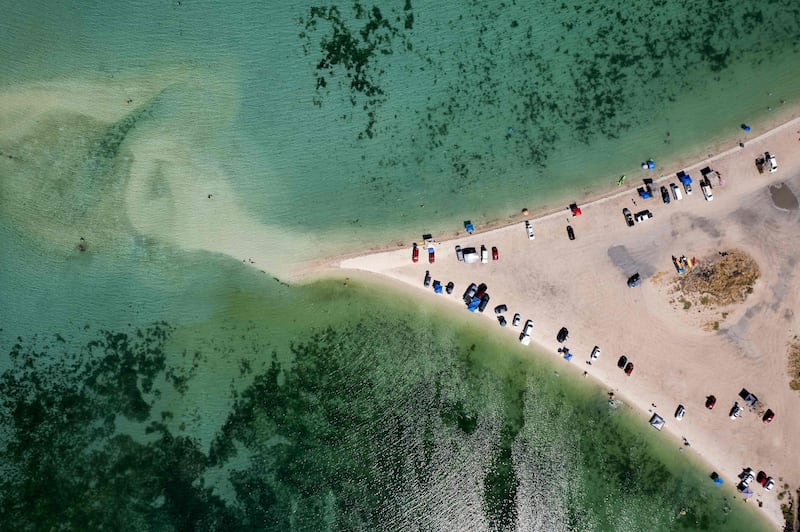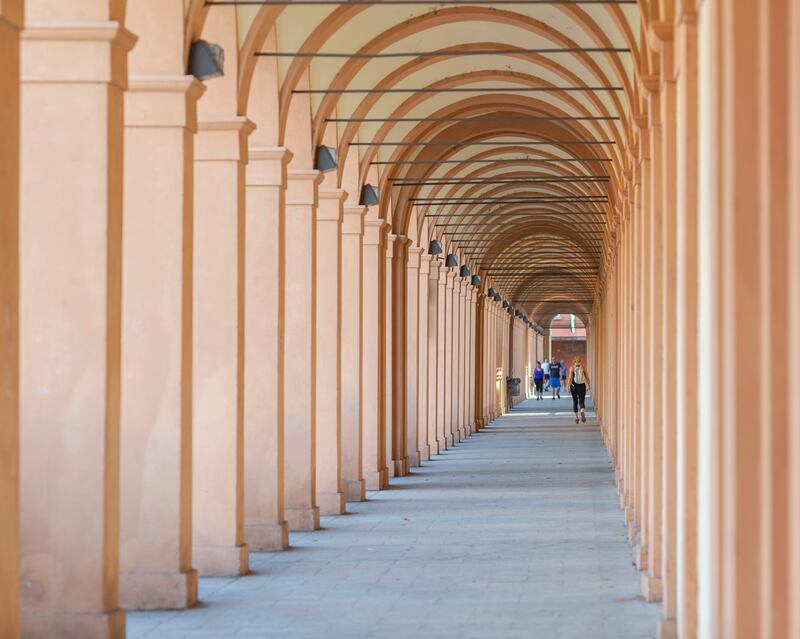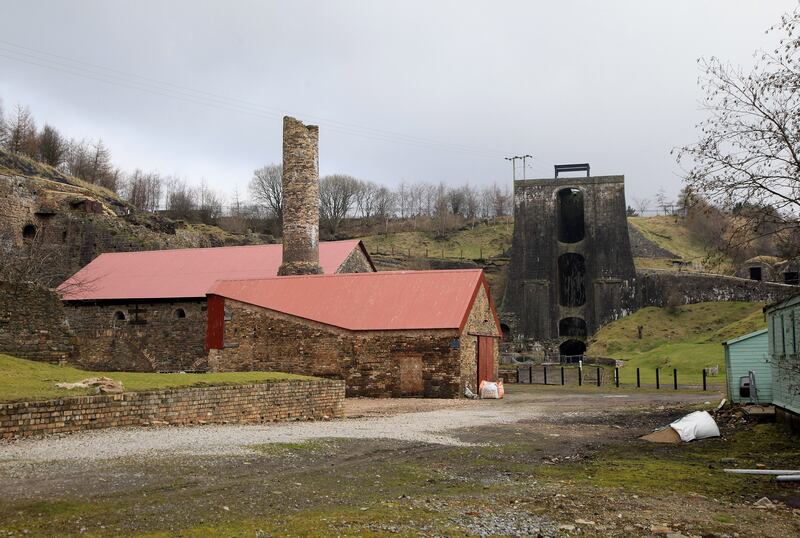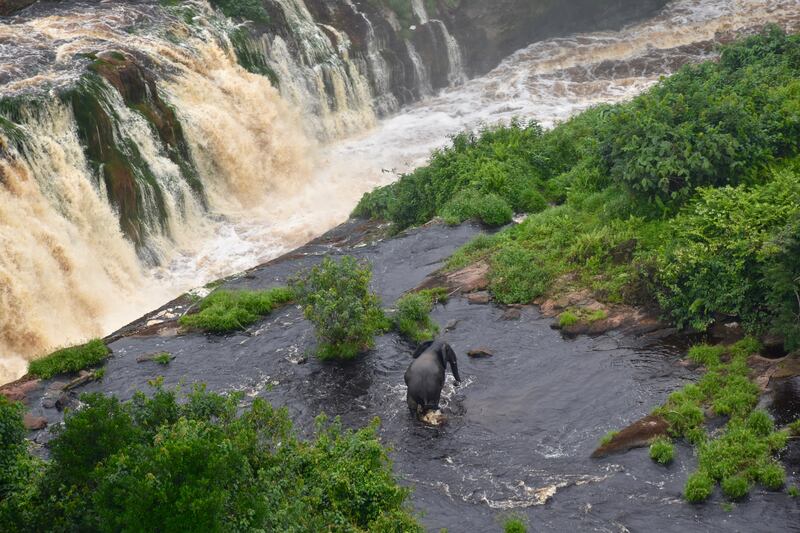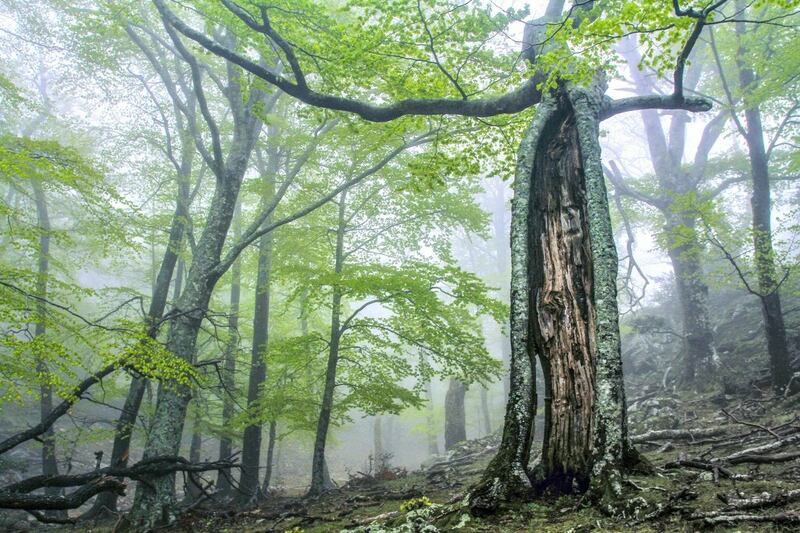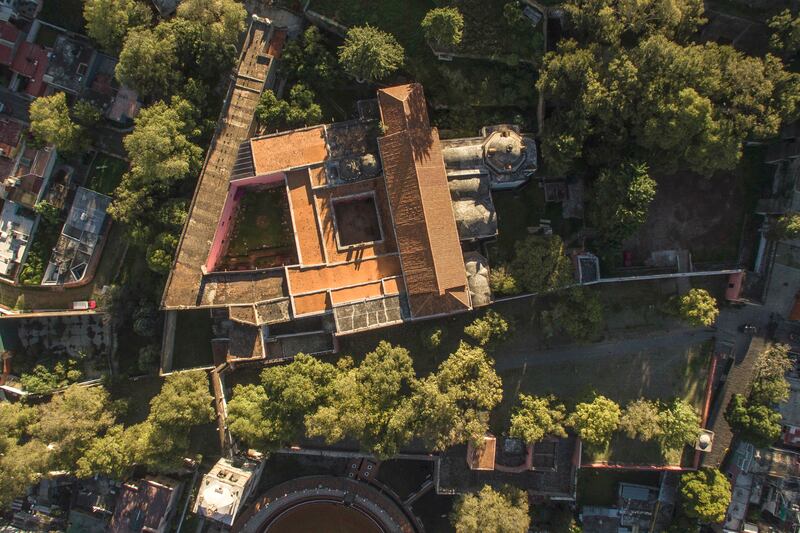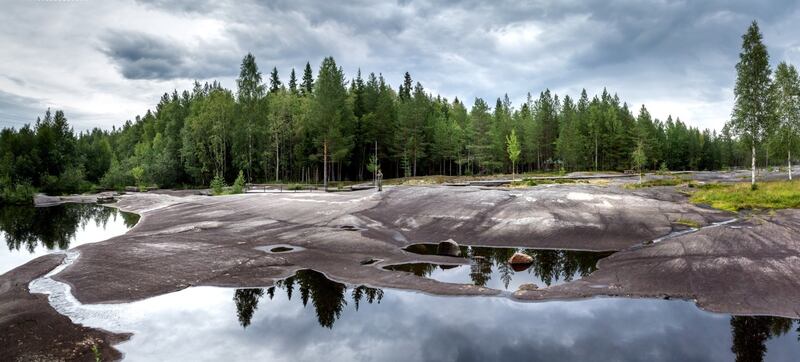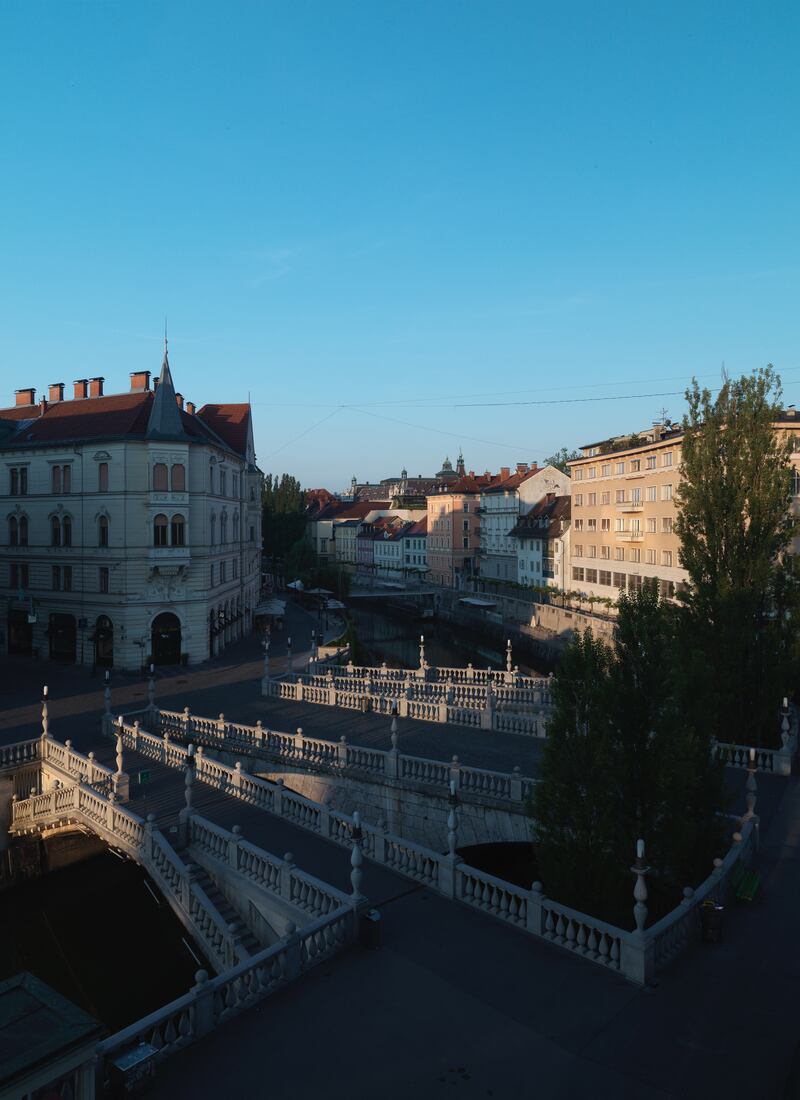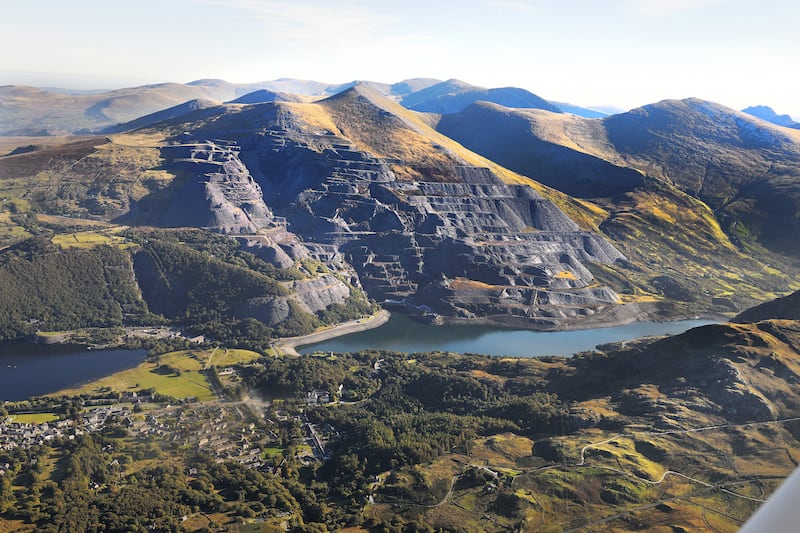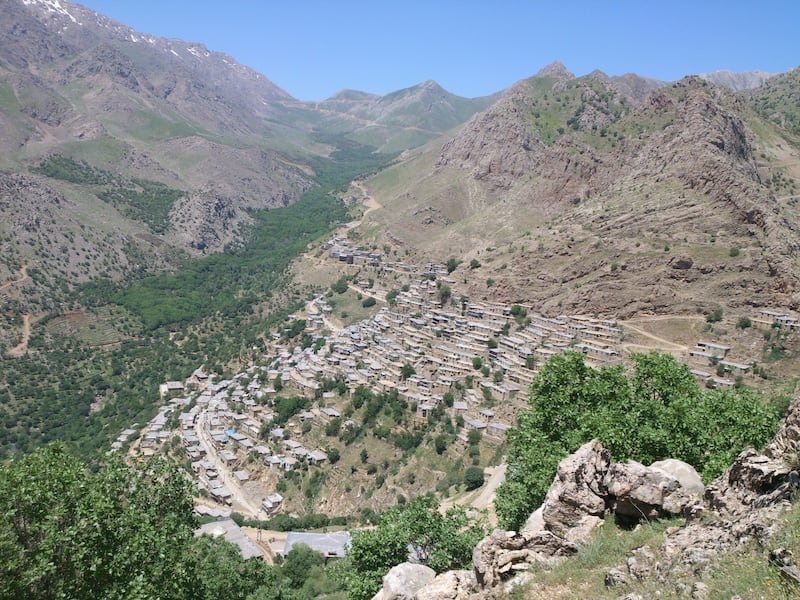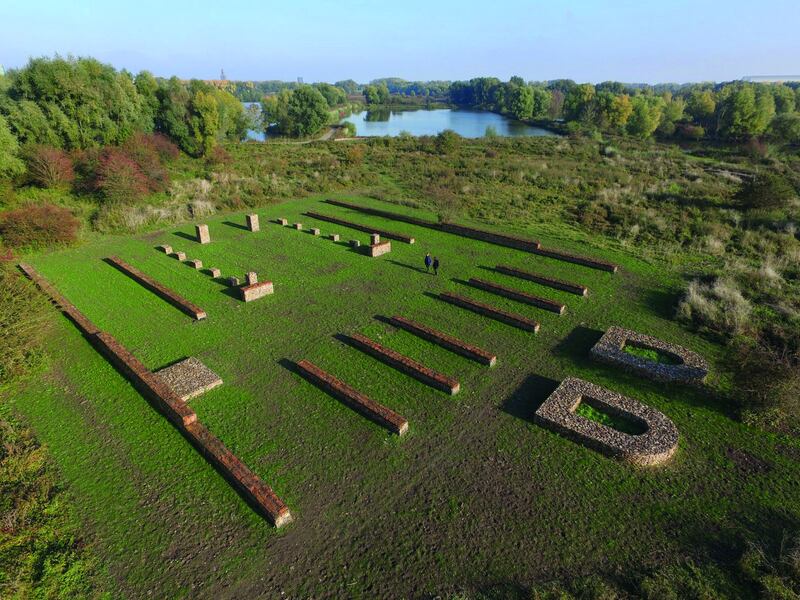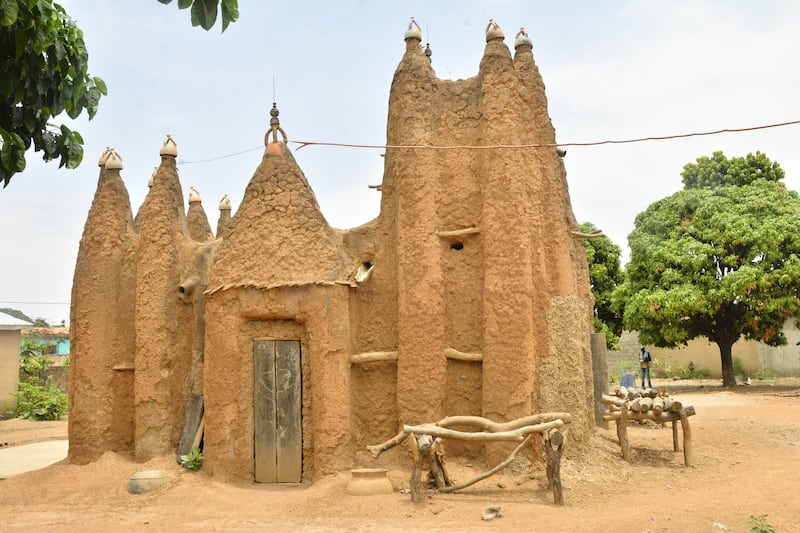From Saudi Arabia's Hima Cultural Area to Jordan's ancient agricultural town of As-Salt and forests in Thailand, a temple in India and the historic city of Nice, there were a total of 37 sites listed in the latest session of the World Heritage Committee, which concluded last month.
Postponed last year because of the coronavirus pandemic, the 44th session of the Committee inscribed 34 new sites and extended three properties. The new properties include 29 cultural and five natural sites.
Liverpool's waterfront in the UK was removed from the World Heritage List after concerns about overdevelopment, including plans for a new football stadium. The move prompted the city's mayor Joanne Anderson to say she found it "incomprehensible" and that she would try to appeal.
The addition of other sites, such as Romania's ancient Rosia Montana mining town, received mixed reactions. The centre of a long, fierce battle between a Canadian mining company and environmentalists, Rosia Montana, located in western Romania, is home to Europe’s largest gold deposits. Gabriel Resources, a Canadian mining company that gained concession rights in 1999, planned to extract the gold and silver over a 16-year period.
Rosia Montana's Mayor Eugen Furdui, who supports the mining project, told Romanian news channel Digi24 that Unesco heritage status would not bring any benefits to local residents or the country.
Romanian President Klaus Iohannis welcomed the decision, however. “Through joint efforts of the authorities and specialists, Rosia Montana must become a model of value for heritage through the sustainable development of the area,” he said on Tuesday.
The Committee also recognised sufficient improvements in the state of conservation of the World Heritage site of Salonga National Park in the Democratic Republic of the Congo, and removed it from its list of World Heritage in Danger.
Scroll through the gallery above to see all of the newly listed sites on the Unesco World Heritage List in 2021.
Arslantepe Mound, Turkey
The four-hectare, 30-metre-high archaeological mound, known as the Arslantepe Mound, formed by the superimposition of settlements for millennia, dates back to at least the 6th millennium BCE to the late Roman period. The archaeological site and its palace are a unique visible testimony to the crucial process of state formation and the transformation of society from egalitarian to hierarchical and politically centralised, describes Unesco on its website. The palace is the first example in the world of this type of architectural and functional organisation of power.
Chankillo Archaeoastronomical Complex, Peru
This archaeological complex boasts ritual, administrative and defensive functions, but it’s the astronomical offering that defines its value. It was built more than 2,300 years ago in the Ancash region, west of the Andes mountain range. It is the earliest example known to date of a site in the Americas dedicated to astronomy, and played a "vital role of knowledge within ancient civilisations", says Unesco.
Colonies of Benevolence: Belgium, Netherlands
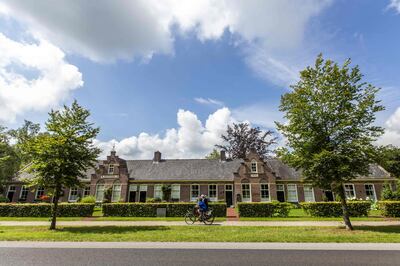
The transnational site covers four settlements, including one colony in Belgium and three in the Netherlands. The Society of Benevolence (Maatschappij van Weldadigheid) was a Dutch private organisation set up in 1818 to help poor families, mostly from the big cities, improve their lives in the aftermath of the Napoleonic French occupation by granting them farming land.
Frederiksoord in the Netherlands is the earliest of these colonies and home to the original headquarters of the Society of Benevolence. Other sites are the colonies of Wilhelminaoord and Veenhuizen in the Netherlands, and Wortel in Belgium.
Cordouan Lighthouse, France
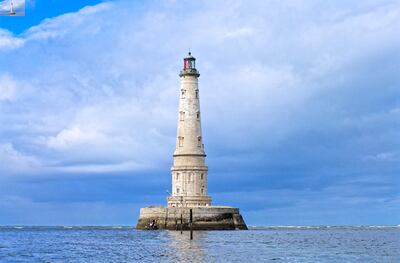
The Cordouan beacon, also known as the "king of lighthouses", is the last to be located in France, and the second of its kind after Spain's La Coruna to win recognition from Unesco. The lighthouse was built at the turn of the 16th and 17th centuries, designed by engineer Louis de Foix and remodelled by engineer Joseph Teulere in the 18th century.
The world heritage body describes it as a "masterpiece of maritime signalling". The tower, which sits in a "highly exposed and hostile environment" in the Atlantic Ocean at the mouth of the Gironde estuary in south-western France, was created from white limestone dressed blocks and decorated with columns, ornate brackets and gargoyles.
Kakatiya Rudreshwara (Ramappa) Temple, Telangana, India
Rudreshwara Temple, popularly known as Ramappa Temple, is located in the south-central state of Telangana, India, in the village of Palampet, about 200 kilometres north-east of Hyderabad city. Ramappa Temple is the main Shiva temple in a walled complex built during the Kakatiyan period (1123-1323 CE) under rulers Rudradeva and Recharla Rudra, describes the Unesco website. Construction of the sandstone temple began in 1213 CE and is believed to have continued over 40 years.
Mathildenhohe Darmstadt, Germany
Mathildenhohe is the highest elevation above Darmstadt, a city in west-central Germany, where, in 1897, Ernst Ludwig, Grand Duke of Hesse, established the Darmstadt Artists' Colony as a centre for emerging movements in architecture, arts and crafts. The buildings in the colony, which was expanded during exhibitions in 1901, 1904, 1908 and 1914, were created by its members as "experimental early modernist living and working environments", describes Unesco. This means that today it offers testimony to early modern architecture, urban planning and landscape design influenced by the Arts and Crafts movement and Vienna Secession.
Padua’s 14th-century fresco cycles, Italy
Eight religious and secular building complexes situated within the historic walled city of Padua make up this newly inscribed site. Each house has a selection of fresco cycles painted between 1302 and 1397 by different artists for various reasons. Despite this, the frescoes are unified in style and content. It includes Giotto's Scrovegni Chapel cycle, considered an important masterpiece of Western art and a "revolutionary development" in the history of mural painting. Other works include those by Guariento di Arpo, Giusto de' Menabuoi, Altichiero da Zevio, Jacopo d'Avanzi and Jacopo da Verona.
Paseo del Prado and Buen Retiro, Spain
El Retiro (The Retreat), an urban green space with a boating lake enjoyed by locals and tourists, was originally a palace and gardens built for the personal use of King Felipe IV in the 17th century. Located at the urban heart of Madrid, the 200-hectare cultural landscape has evolved since the creation of the tree-lined Paseo del Prado avenue, a prototype of the Hispanic alameda or promenade, in the 16th century, Unesco says.
Quanzhou: Emporium of the World in Song-Yuan, China
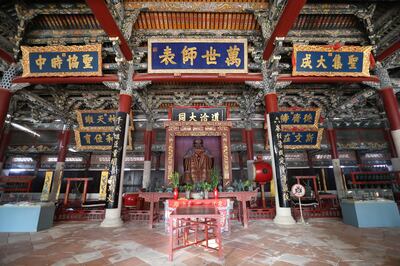
Quanzhou: Emporium of the World in Song-Yuan China is a serial inscription of 22 sites, including temples, port ruins, ancient bridges and kilns. This includes Dacheng Palace Hall, Qingjing Mosque, Islamic tombs, Liusheng Pagoda, Meishan Dock, Kaiyuan Temple and more.
Quanzhou was an important Chinese port along the Silk Road, known historically by traders from the Arab world as Zayton, or Zaitun, linking other ports such as Madras in India, Muscat in Oman and Siraf in Iran. Famous medieval explorers known to have visited the port include Ibn Battuta and Marco Polo.
Rosia Montana Mining Landscape, Romania
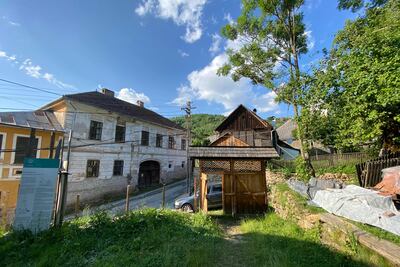
Rosia Montana, located in western Romania, is home to Europe’s largest gold deposits. As Alburnus Maior, it was the site of extensive gold mining during the Roman Empire. Over 166 years, starting in 106 BC, the Romans extracted about 500 tonnes of gold from the site developing highly engineered works. The site was also put on Unesco’s Danger List.
Sitio Roberto Burle Marx, Brazil
The Sitio Burle Marx in western Rio features more than 3,500 species of plants native to Rio and is considered a laboratory for botanical and landscape experimentation. The site was designated a cultural landscape, a category that celebrates places allowing interaction between the environment and people.
The site was named after Burle Marx, as it was his home until 1985, when he donated it to the federal government. He has been recognised as one of the most important landscape artists of the 20th century and is credited with creating the concept of the modern tropical garden.
Great Spa Towns of Europe: Austria, Belgium, Czechia, France, Germany, Italy, UK of Great Britain and Northern Ireland
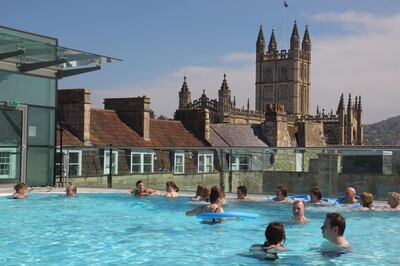
Eleven towns in seven European countries make up this transnational site. This includes Baden bei Wien in Austria, Karlovy Vary in Czechia, Vichy in France, Baden-Baden and Bad Ems in Germany, and the city of Bath in the UK. All of these towns have been developed around natural mineral water springs, and are a clear demonstration of international European spa culture, which sprung up in the early 18th century to the 1930s.
Church of Atlantida, Uruguay
The temple, inspired by Italian paleo-Christian and medieval religious architecture, was inaugurated in 1960. It represents a novel utilisation of exposed and reinforced brick. Built on a rectangular plan of one single hall, the church features distinctive undulating walls supporting a similarly undulating roof, composed of a sequence of reinforced brick Gaussian vaults, designed by Uruguayan engineer Eladio Dieste.
The church offers an example of formal and spatial achievements in modern architecture in Latin America during the second half of the 20th century.
Trans-Iranian Railway, Iran
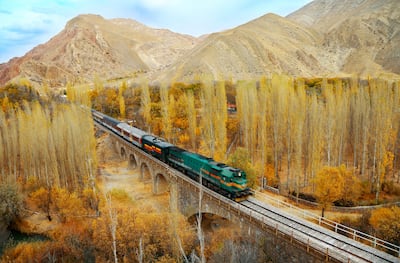
The Trans-Iranian Railway, which connects the Caspian Sea in the north-east with the Arabian Gulf in the south-west, crossing two mountain ranges as well as rivers, highlands, forests and plains, and four different climatic areas, is also now a World Heritage Site.
Started in 1927 and completed in 1938, the 1,394km-long railway was designed and executed in a successful collaboration between the Iranian government and 43 construction contractors from many countries.
Hima Cultural Area, Saudi Arabia
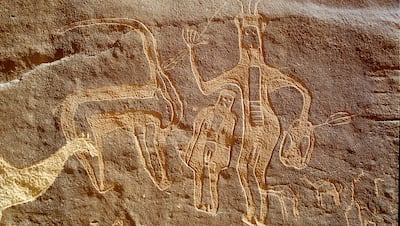
Located between Najran and Wadi Addawasir in the country's south-west, Hima is home to one of the largest rock art complexes in the world. Hima features more than 34 separate sites including rock inscriptions and wells along the route of the ancient Arabian caravans. The area contains a substantial collection of rock art images depicting hunting, fauna, flora and lifestyles in a cultural continuity of 7,000 years, Unesco says.
Amami-Oshima Island, Tokunoshima Island, Northern part of Okinawa Island, and Iriomote Island, Japan
A cluster of four islands in Japan, which are home to diverse ecosystems and a number of rare species, have been added to Unesco’s natural World Heritage Sites list. The 42,698-hectare area, comprising Amami-Oshima Island and Tokunoshima Island in Kagoshima Prefecture, as well as the northern part of the main Okinawa Island and Iriomote Island in Okinawa Prefecture, have remained largely isolated, allowing plant and animal species to flourish.
Colchic Rainforests and Wetlands, Georgia
Recognised as a major element of the Black Sea basin and the South Caucasus ecological system, the Mtirala and Kolkheti National Parks, as well as the Kintrishi and Kobuleti protected areas, have been inscribed on to Unesco’s natural World Heritage List. The territorial formations, safeguarded by the Agency of Protected Areas of Georgia, were formed between 1959 and 2007.
Korean Tidal Flats of Getbol
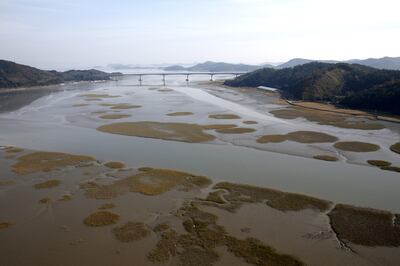
Situated in the eastern Yellow Sea on the south-western and southern coast of the Republic of Korea, the site comprises four component parts: Seocheon Getbol, Gochang Getbol, Shinan Getbol and Boseong-Suncheon Getbol.
"The site exhibits a complex combination of geological, oceanographic and climatologic conditions that have led to the development of coastal diverse sedimentary systems," says Unesco. It's also home to what is believed to be 2,150 species of flora and fauna, including 22 globally threatened or near-threatened species.
Kaeng Krachan Forest Complex, Thailand
Located at the crossroads between the Himalayan, Indochina and Sumatran faunal and floral realms, this site is home to rich biodiversity. It is dominated by semi-evergreen/dry evergreen and moist evergreen forest with some mixed deciduous, montane and deciduous dipterocarp forests. Eight cat species also call the site home, including the endangered tiger, fishing cat and the near-threatened leopard, Unesco says.
As-Salt, Jordan
Located north-west of Amman, Jordan, As-Salt has attracted settlers since the Iron Age, and is most distinctive for its architecture. Between 1860 and 1925, the city then under the Ottoman Empire witnessed the development of an architectural movement, the result of work by a "stone master" who had moved from nearby Nablus.
“The outstanding universal value of this Arab Eclectic Movement in the history of art and architecture lies on As-Salt's recognisable character,” says Unesco’s website.
Hawraman and Uramanat, Iran
The remote and mountainous landscape has been home to the Hawrami people, a Kurdish tribe that has inhabited the region since about 3000 BC. The property, at the heart of the Zagros Mountains in the provinces of Kurdistan and Kermanshah along the western border of Iran, encompasses two components: the Central-Eastern Valley (Zhaverud and Takht, in Kurdistan Province) and the Western Valley (Lahun, in Kermanshah Province).
Dholavira, a Harappan City, India
The ancient city of Dholavira in the Indian state of Gujarat is one of the most remarkable and well-preserved urban settlements in South Asia, dating from the third to mid-second millennium BC, Unesco says. The site, which contains ruins of a Harappan city as part of the ancient Indus Valley Civilisation, was discovered in 1968. It is set apart by its unique characteristics, such as its water management system, multilayered defensive mechanisms, extensive use of stone in construction and special burial structures.
Frontiers of the Roman Empire – The Lower German Limes: Germany, Netherlands
Hundreds of kilometres along the left bank of the River Rhine from Rhenish Massif in Germany to the North Sea coast in the Netherlands is filled with examples of sites and infrastructure from the Roman Empire. Archaeological remains include military bases, forts, fortlets, towers, temporary camps, roads, harbours, a fleet base, a canal, and an aqueduct, as well as civilian settlements, towns, cemeteries, sanctuaries, an amphitheatre, and a palace.
Jomon Prehistoric Sites, Northern Japan
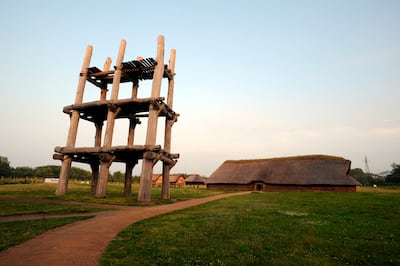
This group of 17 archaeological sites in the southern part of Hokkaido Island and northern Tohoku bear a unique testimony to the development over about 10,000 years of the pre-agricultural yet sedentary Jomon culture and its complex spiritual belief system and rituals, says Unesco. It attests to the emergence, development, maturity and adaptability to environmental changes of a sedentary hunter-fisher-gatherer society that developed from about 13,000 BCE.
Nice, France
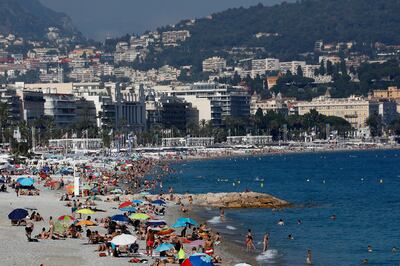
This French Riviera city is known for its cosmopolitanism, its long-standing appeal as a seaside resort dating back to the 18th century, and the role this function has played in its development until 1960. It was here a new type of urban planning emerged, as Nice transformed from a town into a winter resort and then a summer resort, thanks to its climate and geographical location between mountains and sea.
Chinchorro culture, Chile
Three settlements of Chile’s Chinchorro culture were added to the World Heritage List because of their practices of complex mummification techniques, considered the oldest in the world. The Chinchorro culture was made up of groups of fishermen who inhabited the coasts of the Pacific Ocean from the port of Ilo, in Peru, to the coasts of the Chilean desert of Atacama between 5450 BC to 890 BC. Its members were marine hunters and gatherers.
ShUM Sites of Speyer, Worms and Mainz, Germany
Located in the former Imperial cathedral cities of Speyer, Worms and Mainz, in the Upper Rhine Valley, the serial site of Speyer, Worms and Mainz comprise the Speyer Jewry-Court, with the structures of the synagogue and women’s shul (Yiddish for synagogue), the archaeological vestiges of the yeshiva (religious school), the courtyard and the still-intact underground mikveh (ritual bath), which has retained its high architectural and building quality.
The property also comprises the Worms Synagogue Compound, as well as the Old Jewish Cemetery in Worms and the Old Jewish Cemetery in Mainz. The four component sites together reflect the early emergence of distinctive Ashkenazi customs and the development and settlement pattern of the ShUM communities, particularly between the 11th the 14th centuries. The buildings that constitute the property served as prototypes for later Jewish community and religious buildings as well as cemeteries in Europe. The acronym ShUM stands for the Hebrew initials of Speyer, Worms and Mainz.
Sudanese style mosques, Ivory Coast
The eight small adobe mosques – at Tengrela, Kouto, Sorobango, Samatiguila, M’Bengue, Kong and Kaouara – are characterised by protruding timbers, vertical buttresses crowned by pottery or ostrich eggs, and tapering minarets. They present an interpretation of an architectural style thought to have originated around the 14th century in the town of Djenne, then part of the Empire of Mali, which prospered from the trade in gold and salt across the Sahara to North Africa.
The mosques are the best conserved of 20 such edifices that remain in Cote d’Ivoire or Ivory Coast, where hundreds existed early last century. They present highly important testimonies to the trans-Saharan trade that facilitated the expansion of Islam and Islamic culture and reflect a fusion of Islamic and local architectural forms in a highly distinctive style that has persisted over time.
Monasteries on the Slopes of Popocatepetl, Mexico
The Franciscan Ensemble of the Monastery and Cathedral of Our Lady of the Assumption, Tlaxcala, is part of the first construction programme launched in 1524 for the evangelisation and colonisation of the northern territories of Mexico. The ensemble is one of the first five monasteries established by Franciscan, Dominican and Augustinian friars, and one of three still standing. The other two are already inscribed on the World Heritage List.
The Tlaxcala ensemble of buildings provides an example of the architectural model and spatial solutions developed in response to a new cultural context, which integrated local elements to create spaces such as wide atria and capilla posa chapels. The edifice presents two other particular features, a free-standing tower and a wooden mudejar not found in the other monasteries already inscribed on the World Heritage List as part of the serial property. It offers a better understanding of the new architectural model that influenced both urban development and monastic buildings until the 18th century.
The Porticoes of Bologna, Italy
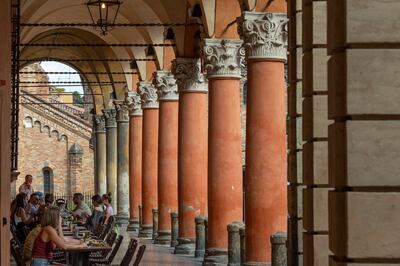
Comprising 12 component parts, this property is located within the Municipality of Bologna from the 12th century to the present. Its porticoes, or sheltered walkways, are considered to be the most representative among the city’s porticoes, which cover a total stretch of 62km.
Some of the porticoes are built of wood, others of stone or brick, as well as reinforced concrete, covering roads, squares, paths and walkways, either on one or both sides of a street. In the 20th century, the use of concrete allowed the replacement of the traditional vaulted arcades with new building possibilities and a new architectural language for the porticoes emerged, as exemplified in the Barca district.
The works of Joze Plecnik in Ljubljana – Human Centred Urban Design, Slovenia
The work Joze Plecnik carried in Ljubljana between the First World War and Second World War present an example of a human-centred urban design that changed the identity of the city following the dissolution of the Austro-Hungarian Empire, says Unesco. The property consists of a series of public spaces including squares, parks, streets, promenades, bridges and public institutions such as a national library, churches, markets, funerary complex, which all contributed to the city’s new identity.
The Slate Landscape of North-west Wales, UK
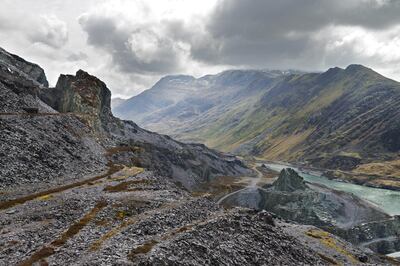
The Slate Landscape of North-west Wales illustrates the transformation that industrial slate quarrying and mining brought about in the traditional rural environment of the mountains and valleys of the Snowdon massif. The serial property comprises six components each encompassing relict quarries and mines, archaeological sites related to slate industrial processing, historical settlements, historic gardens and grand country houses, ports, harbours and quays, and railway and road systems illustrating the functional and social linkages of the relict slate industrial landscape.
Petroglyphs of Lake Onega and the White Sea, Russian Federation
Containing about 4,500 petroglyphs carved in the rocks during the Neolithic period, this site is dated 6,000 to 7,000 years ago and located in the Republic of Karelia in the Russian Federation. It is one of the largest such sites in Europe with petroglyphs that document Neolithic culture in Fennoscandia.
The serial property encompasses 33 sites in two component parts 300km apart: 22 petroglyph sites at Lake Onega in the District of Pudozhsky featuring a total of over 1,200 figures and 3,411 figures in 11 sites by the White Sea in the District of Belomorsky.
Ivindo National Park, Gabon
This largely pristine site sits on the equator in northern Gabon and encompasses an area of almost 300,000 hectares crossed by a network of blackwater rivers. It features rapids and waterfalls bordered by rainforest, which make for a landscape of great aesthetic value, according to Unesco.
It's home to freshwater fish species, 13 of which are threatened, and at least seven species of riverweeds. Many fish species in the property are yet to be described and parts of the site have hardly been investigated. It is also home to Critically Endangered Slender-snouted Crocodiles.
Extensions of existing sites
Ancient and Primeval Beech Forests of the Carpathians and Other Regions of Europe: Extended to Bosnia Herzegovina, Czechia, France, Italy, North Macedonia, Poland, Slovakia and Switzerland
The transnational World Heritage serial site of ancient and primeval Beech Forests of the Carpathians has included 10 European countries, which now comprises 94 component parts across 18 countries. The extended property represents an outstanding example of relatively undisturbed, complex temperate forests and exhibits a wide spectrum of comprehensive ecological patterns and processes of pure and mixed strands of European beech across a variety of environmental conditions, Unesco said.
Dutch Water Defence Lines, Netherlands: Extension of Defence Line of Amsterdam
The boundary modification of the property first inscribed in 1996 stretches from the IJsselmeer (previously known as Zuiderzee) at Muiden to the Biesbosch estuary at Werkendam. The modification adds the New Dutch Waterline to the existing Defence Line of Amsterdam World Heritage site, to become the Dutch Water Defence Lines World Heritage property, Unesco said. The extension also includes a number of small extensions and reductions to the boundaries of the Defence Line of Amsterdam.
Built from 1814 to 1940, the site is the only example of a fortification based on the principle of controlling the waters, according to Unesco. Since the 16th century, the people of the Netherlands have used their knowledge of hydraulic engineering for defence purposes. The centre of the country was protected by a network of 45 armed forts, acting in concert with temporary flooding from polders and an intricate system of canals and locks.
Frontiers of the Roman Empire – The Danube Limes: Austria, Germany, Slovakia
Inscribed this year, this extension of relics of the Roman Empire covers almost 600km of the Danube frontier, forming part of the much larger frontier of the Roman Empire that encircled the Mediterranean Sea, Unesco said. The Danube Limes (Western Segment) reflects this part of the Roman Frontier through the selection of sites that represent key elements from roads, legionary fortresses and their associated settlements to small forts and temporary camps, and the way these structures relate to local topography, the Committee added.
